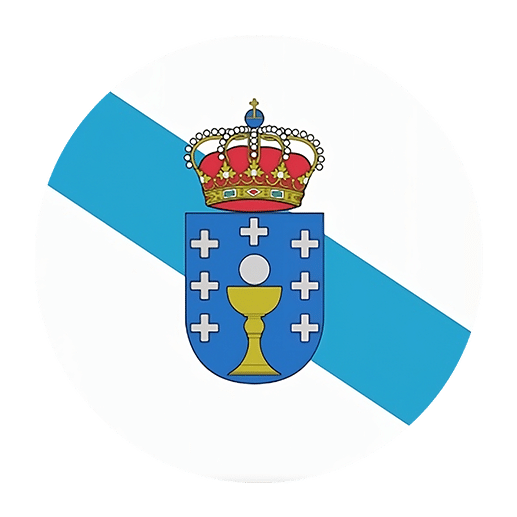Galician, a Romance language spoken primarily in the Galicia region of Spain, shares many similarities with its linguistic cousins, Portuguese and Spanish. One of the fundamental aspects of mastering any language is understanding how to use its articles correctly. Articles, whether definite or indefinite, play a crucial role in conveying the specificity and generality of nouns. This article will delve into the nuances of using Galician articles correctly to help English-speaking learners navigate this essential aspect of the language.
Understanding Definite and Indefinite Articles
In Galician, as in many Romance languages, articles are used to indicate whether a noun is being referred to in a specific or general sense. There are two main types of articles: definite and indefinite.
Definite Articles
Definite articles are used to refer to specific nouns that are known to the speaker and listener. In English, the definite article is “the.” In Galician, the definite articles change according to the gender and number of the noun they modify. Here are the forms:
– Masculine Singular: o
– Masculine Plural: os
– Feminine Singular: a
– Feminine Plural: as
For example:
– o libro (the book – masculine singular)
– os libros (the books – masculine plural)
– a casa (the house – feminine singular)
– as casas (the houses – feminine plural)
Indefinite Articles
Indefinite articles are used to refer to nonspecific nouns or nouns that are mentioned for the first time. In English, the indefinite articles are “a” and “an.” In Galician, the indefinite articles also change according to the gender and number of the noun. Here are the forms:
– Masculine Singular: un
– Masculine Plural: uns
– Feminine Singular: unha
– Feminine Plural: unhas
For example:
– un libro (a book – masculine singular)
– uns libros (some books – masculine plural)
– unha casa (a house – feminine singular)
– unhas casas (some houses – feminine plural)
Gender and Number Agreement
One of the key differences between English and Galician articles is the requirement for gender and number agreement. In English, articles do not change according to the gender of the noun, but in Galician, articles must agree with the gender (masculine or feminine) and number (singular or plural) of the noun they modify.
Gender Agreement
Galician nouns are categorized as either masculine or feminine. Typically, nouns ending in -o are masculine, and nouns ending in -a are feminine. However, there are exceptions, and some nouns may not follow this pattern. For instance:
– Masculine: o coche (the car), un río (a river)
– Feminine: a mesa (the table), unha flor (a flower)
Number Agreement
Articles must also agree with the number of the noun they modify. Singular nouns take singular articles, while plural nouns take plural articles. For example:
– Singular: a cidade (the city), unha árbore (a tree)
– Plural: as cidades (the cities), unhas árbores (some trees)
Special Cases and Exceptions
As with any language, there are special cases and exceptions to the general rules. Here are a few notable ones in Galician:
Contractions with Prepositions
In Galician, definite articles often contract with prepositions to form a single word. This is similar to the way English contracts “of the” to “o'” in informal speech, but it is more systematic in Galician. Here are some common contractions:
– de (of) + o = do
– de + a = da
– de + os = dos
– de + as = das
– en (in) + o = no
– en + a = na
– en + os = nos
– en + as = nas
For example:
– a chave do coche (the key of the car)
– a porta da casa (the door of the house)
– os libros nos estantes (the books in the shelves)
– as flores nas xardíns (the flowers in the gardens)
Elision
Elision occurs when a vowel at the end of one word is dropped before another word beginning with a vowel. In Galician, this can happen with articles. For example:
– a árbore (the tree) may become a’ árbore
Note that elision is more common in spoken Galician and less so in formal writing.
Articles with Proper Nouns
In Galician, definite articles are sometimes used with proper nouns, especially when referring to geographical names or institutions. This is unlike English, where articles are typically not used with proper nouns. For example:
– O Porto (Porto, the city in Portugal)
– A Coruña (the city of Coruña)
– O Parlamento (the Parliament)
Practice and Application
Understanding the rules is only the first step; applying them through practice is crucial for mastery. Here are some exercises and tips to help you practice using Galician articles correctly.
Exercise 1: Gender and Number Agreement
Match the correct article with the following nouns:
1. ______ libro (book)
2. ______ mesas (tables)
3. ______ río (river)
4. ______ cidades (cities)
5. ______ árbore (tree)
Answers:
1. o libro
2. as mesas
3. un río
4. as cidades
5. unha árbore
Exercise 2: Contractions with Prepositions
Rewrite the following phrases using the correct contractions:
1. a chave de o coche (the key of the car)
2. a porta de a casa (the door of the house)
3. os libros en os estantes (the books in the shelves)
4. as flores en as xardíns (the flowers in the gardens)
Answers:
1. a chave do coche
2. a porta da casa
3. os libros nos estantes
4. as flores nas xardíns
Exercise 3: Articles with Proper Nouns
Translate the following sentences into Galician, using the correct articles for proper nouns:
1. I visited Porto.
2. The Parliament is in session.
3. She lives in Coruña.
Answers:
1. Visitei O Porto.
2. O Parlamento está en sesión.
3. Ela vive en A Coruña.
Common Mistakes to Avoid
While learning to use Galician articles correctly, learners often make some common mistakes. Here are a few to watch out for:
Ignoring Gender Agreement
One of the most frequent mistakes is neglecting to match the article with the gender of the noun. Always remember to check whether the noun is masculine or feminine and choose the corresponding article.
Forgetting Plural Forms
Another common error is forgetting to use the plural forms of articles when dealing with plural nouns. Make sure to use os/as for definite articles and uns/unhas for indefinite articles when the noun is plural.
Overlooking Contractions
Learners may sometimes forget to use contractions with prepositions, especially if they are more accustomed to English, where such contractions are less systematic. Practice using contractions like do, da, no, and na to sound more natural in Galician.
Conclusion
Mastering the use of articles in Galician is an essential step towards achieving fluency in the language. By understanding the rules of gender and number agreement, learning the correct forms of definite and indefinite articles, and being aware of special cases and exceptions, you will be well-equipped to use Galician articles correctly. Practice regularly, pay attention to common mistakes, and immerse yourself in the language to reinforce your learning. With dedication and effort, you will find yourself navigating the intricacies of Galician articles with ease. Boa sorte (good luck)!

